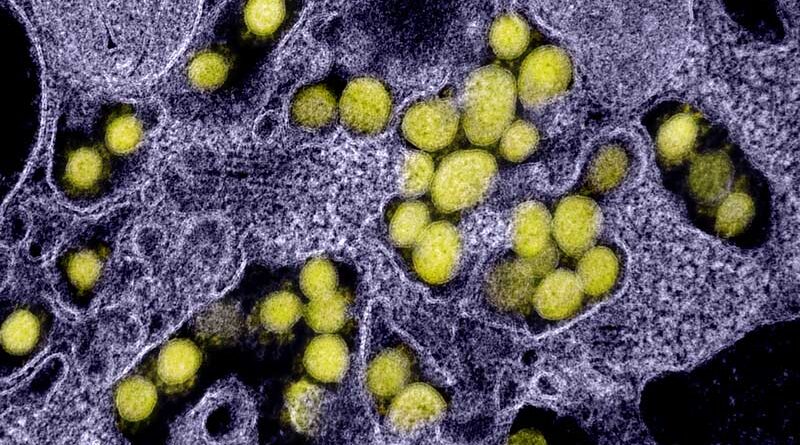Disease detectives track an invisible virus
Disease Detectives: On the Trail of an Invisible Virus
In a world connected by global travel and dense cities, an emerging virus can spread like wildfire. But for every outbreak, a team of highly skilled professionals works tirelessly to track the invisible threat. These are the disease detectives—the epidemiologists, virologists, and public health experts who form the front line in the battle against infectious disease.
Their mission is as complex as any criminal investigation: find the source, map the spread, and stop the chain of transmission before it becomes a pandemic. Here’s how they do it.
The Call: Detecting the Signal in the Noise
The investigation begins with a signal. It might be:
-
An unusual cluster of patients with similar symptoms in one hospital.
-
A spike in flu-like illness reported by school nurses.
-
An alert from an international health surveillance network.
The first step for the disease detectives is to confirm the outbreak. Is this a true cluster of the same illness, or just a coincidence? They analyze lab results to identify the specific pathogen—the “smoking gun” in the form of a virus like SARS-CoV-2, influenza, or a novel pathogen.
Step 1: Crafting the “Wanted” Poster – Case Definition
To track the virus consistently, detectives create a case definition. This is a specific set of criteria that determines who is counted as a case. It includes:
-
Clinical Criteria: Specific symptoms (e.g., fever, cough, rash).
-
Laboratory Criteria: A positive test for the virus.
-
Person, Place, and Time: Who is affected, where, and during what period.
This definition ensures that everyone is looking for the same thing, preventing confusion and ensuring data quality.
Step 2: The Detective’s Notebook – Data Collection
With a case definition in hand, the real legwork begins. Disease detectives conduct in-depth interviews with confirmed cases, acting like forensic investigators. They create a detailed timeline of a patient’s life before they got sick, asking:
-
Where have you traveled?
-
Who have you been in close contact with?
-
Did you attend any large events?
-
What did you eat?
This information is crucial for building a picture of how the virus is moving through a population.
Step 3: Mapping the Web – Contact Tracing
This is the core of outbreak containment. For every confirmed case, detectives work to identify close contacts—people who may have been exposed.
-
Contact Identification: They compile a list of family members, co-workers, friends, and anyone else who was near the infected person.
-
Contact Notification: Each contact is informed of their potential exposure, often with a delicate balance of urgency and compassion to avoid causing panic.
-
Monitoring and Quarantine: Contacts are monitored for symptoms and may be asked to quarantine to prevent further spread, effectively breaking the chains of transmission.
Step 4: Connecting the Dots – Data Analysis
All the collected data is fed into powerful analytical tools. Disease detectives look for patterns:
-
Epidemic Curves: A graph that shows the number of cases over time, revealing whether the outbreak is a common source (like a contaminated food event) or person-to-person spread.
-
Spot Maps: Geographic maps that pinpoint where cases live or work, potentially identifying a hotspot.
-
Statistical Analysis: To identify risk factors and potential sources of the outbreak.
The High-Tech Toolkit of a Modern Disease Detective
Today’s detectives have more tools than ever:
-
Genomic Sequencing: By sequencing the virus’s genome from different patients, they can create a “family tree” for the outbreak. This reveals if cases are linked and how the virus is mutating as it spreads.
-
Wastewater Surveillance: Testing community wastewater can detect the presence of a virus days or even weeks before people start showing up in hospitals, providing an early warning signal.
-
Digital Epidemiology: Analyzing anonymized mobility data and search engine trends can help model the virus’s potential spread.
The Ultimate Goal: Control and Prevention
The work of the disease detectives isn’t just academic. Every piece of evidence leads to action:
-
Isolating the Sick: Ensuring infected individuals do not spread the virus.
-
Recommending Public Health Measures: From mask mandates and social distancing to lockdowns, based on the data they’ve gathered.
-
Identifying the Source: Finding the animal reservoir or patient zero to prevent future outbreaks.
Tracking an invisible virus is a race against time. It requires a blend of scientific rigor, investigative intuition, and a deep commitment to public health. The work of these unseen heroes is what stands between a localized outbreak and a global catastrophe.
